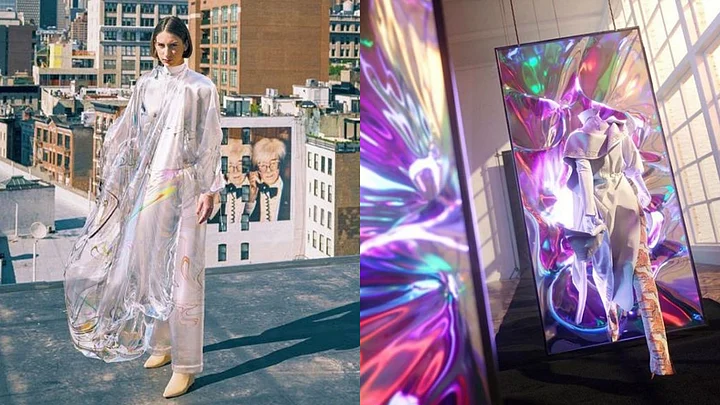World’s first ‘digital dress’, which has never had a physical existence, was auctioned and sold for $9,500 USD.
Yes, you read that right! Yes, it’s not physically wearable!
The dress was created by a digital fashion house, a Dutch startup called The Fabricant.
“$9.500 for the first ever digital couture to be auctioned on the blockchain. We actually sold one of our items that has never been physical. Someone owns it now, and will be able to wear it if they choose to,” read the fashion house’s Instagram post.
Confused? Well... I was. So, I decided to dig deeper into what digital couture is all about.
It’s an Instagram Filter but Also a Dress?
Digital couture is a new and developing sector in global fashion that focuses on digital-only clothing, that is, clothing that is made using three-dimensional fashion design and animation.
This means that before the attire is digitally ‘worn’, a ‘hyper-real’ design may be sold. Once sold, the fashion house can tailor the digital design according to your size and preference.
The first of such digital couture to be sold is the dress called ‘Iridescence’ created by The Fabricant. Below is a closer look at it.
According to Hypebae, the dress is inspired by Johanna Jaskowska’s creation, the popular glossy pixelated filter on Instagram.
So, basically, it’s an Instagram filter but it’s also a dress which can be ‘worn’ digitally by you, if you choose to buy it based on a ‘hyper-real’ design.
Sustainable Fashion but at a Cost
In fact, The Fabricant is not the only brand to have dipped its toes into this fashion innovation. Brands such as Prada, Pucci, Louis Vuitton, Christian Dior, and Jil Sander are also using this technology to reinvent their designs.
The benefits? Prospective clients can skip fitting rooms and cosmetic counters. Instead, they can virtually see how an outfit or makeup would look on them and wear it online.
The Fabricant also argues that digital fashion will have far-reaching consequences for the environment, especially in terms of sustainability.
“When clothing is always digital, never physical, pollution and waste reduction are non-topics. In this new world there’s no such thing as factories, supply chains and sample sizes. There are no delivery trucks to wait for, no clothes to launder and no closets to de-clutter. . . It’s sustainable by its very nature,” claims The Fabricant on Instagram.
However, digital couture, no matter how sustainable, will come at a cost when sold or auctioned by big international brands.
Digital Couture’s Real-World Consequences
Despite big claims of brands about the technology’s environmental benefits, it’s important to reflect upon the kind of culture that digital couture promotes.
On the face of it, digital fashion may seem like a great way for anyone to spice up their look without necessarily having to pay the big bucks, provided that, in the long run, it becomes accessible to all.
However, in the end, it’s not tangible attire and what is being sold to you is a virtual reality and a culture that promotes your virtual existence — how you look online — divorced from physical existence.
So, where do you draw the line between virtual and physical reality?
Alternatively, it may be argued that digital couture opens up endless creative possibilities in art, design, and aesthetics. So, where does the future of digital fashion really stand?
What do you think of digital couture? Tell us in the comments.
(At The Quint, we question everything. Play an active role in shaping our journalism by becoming a member today.)
